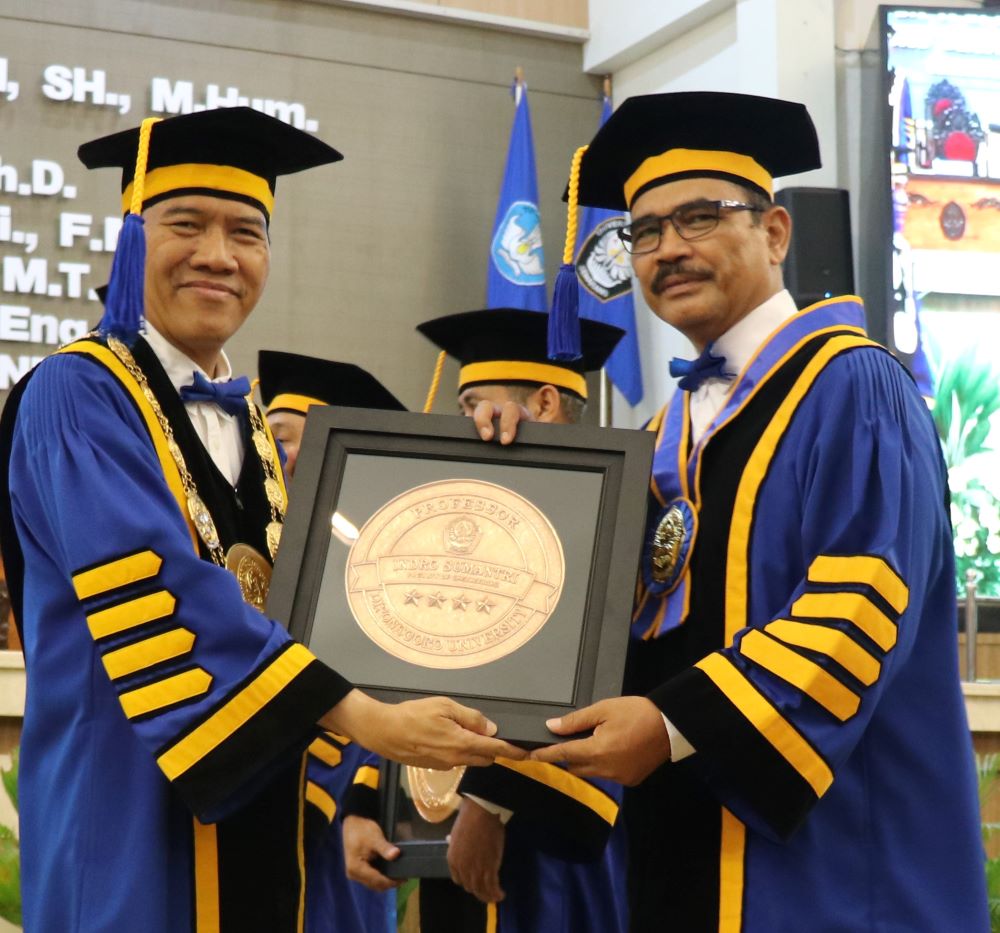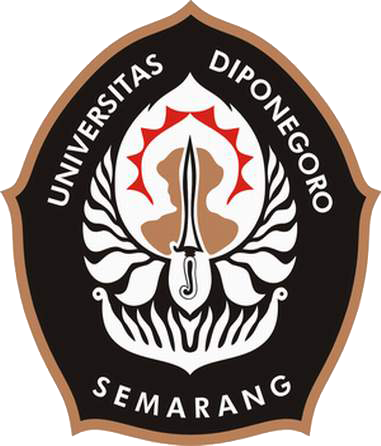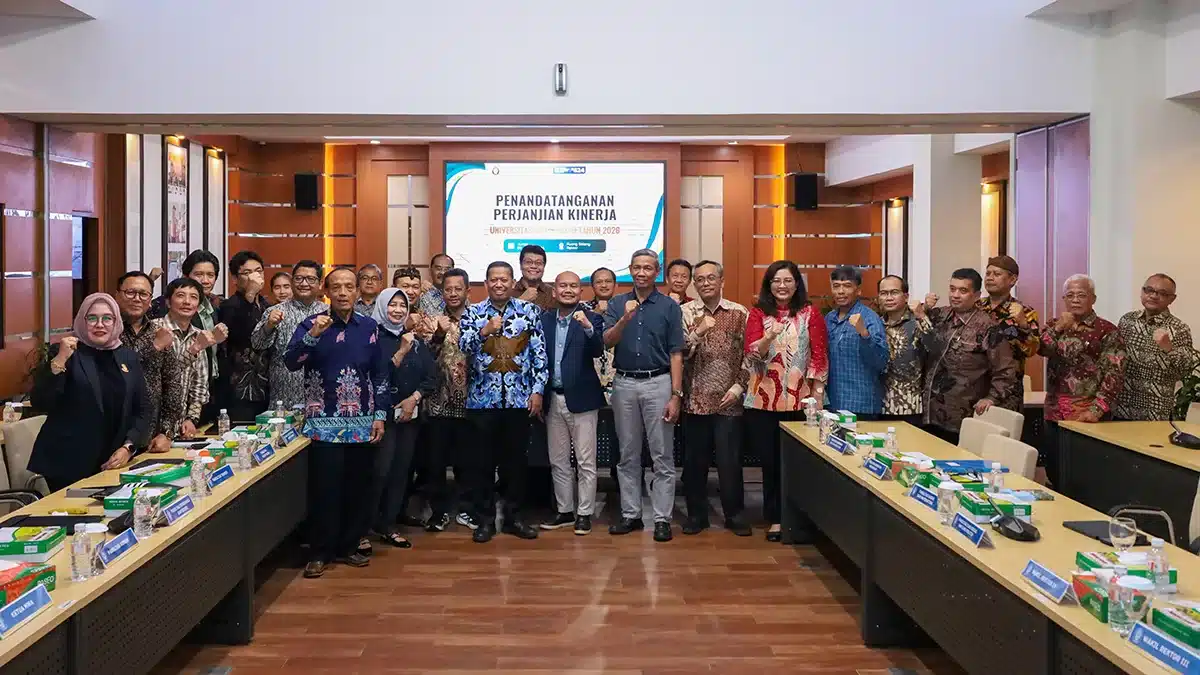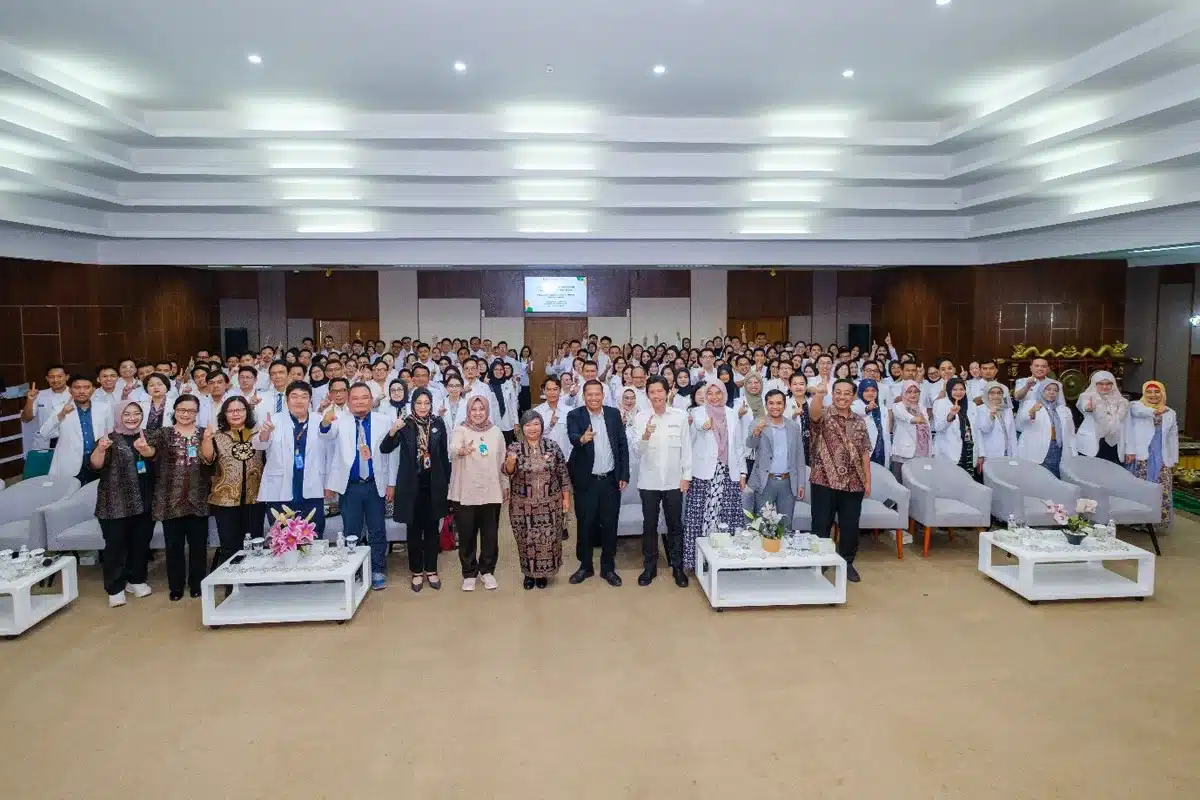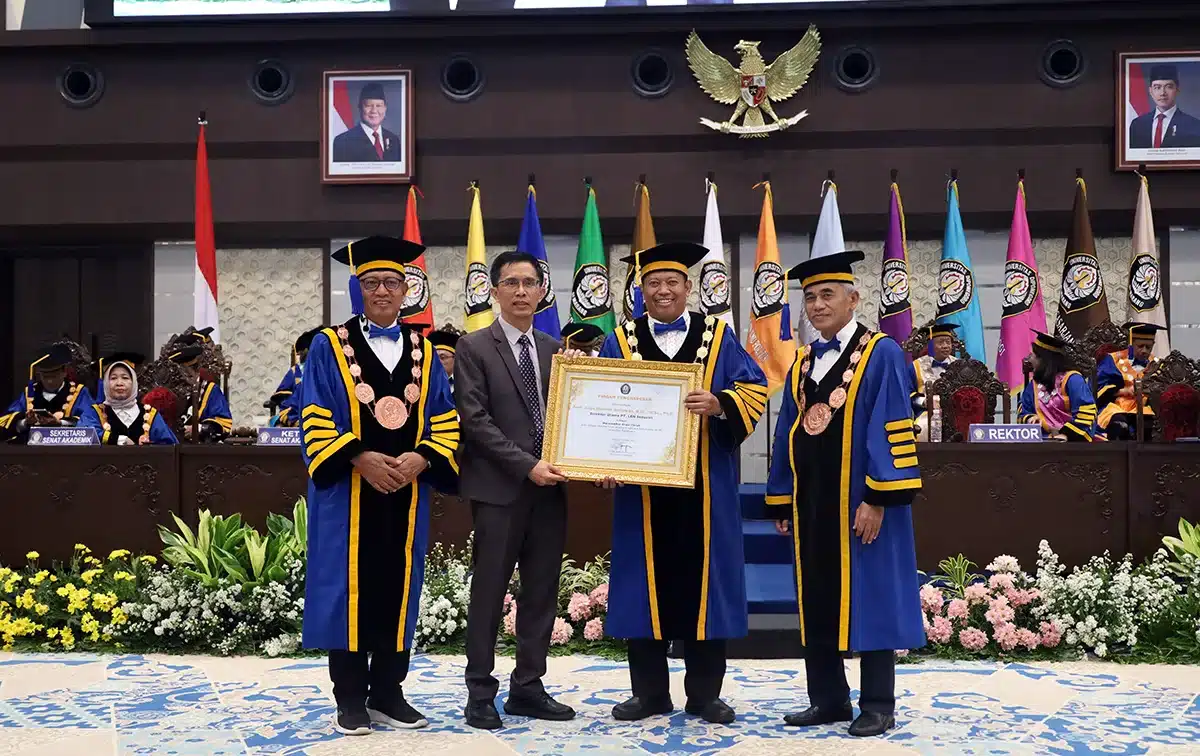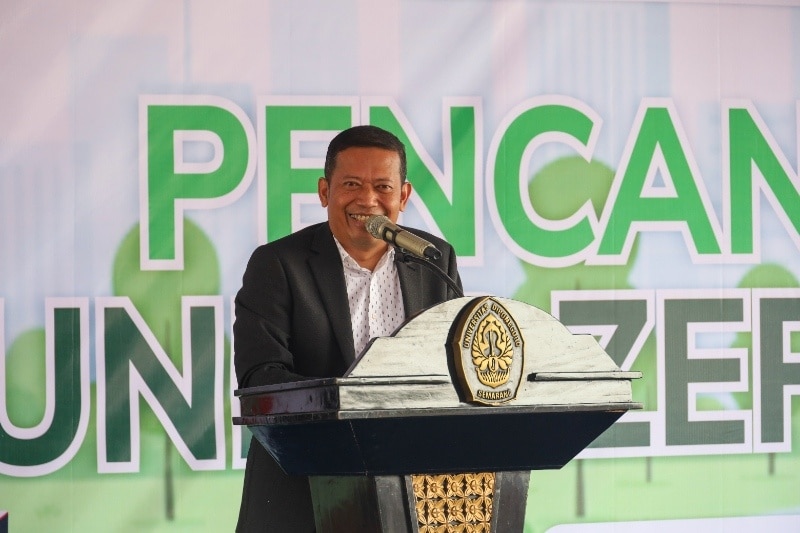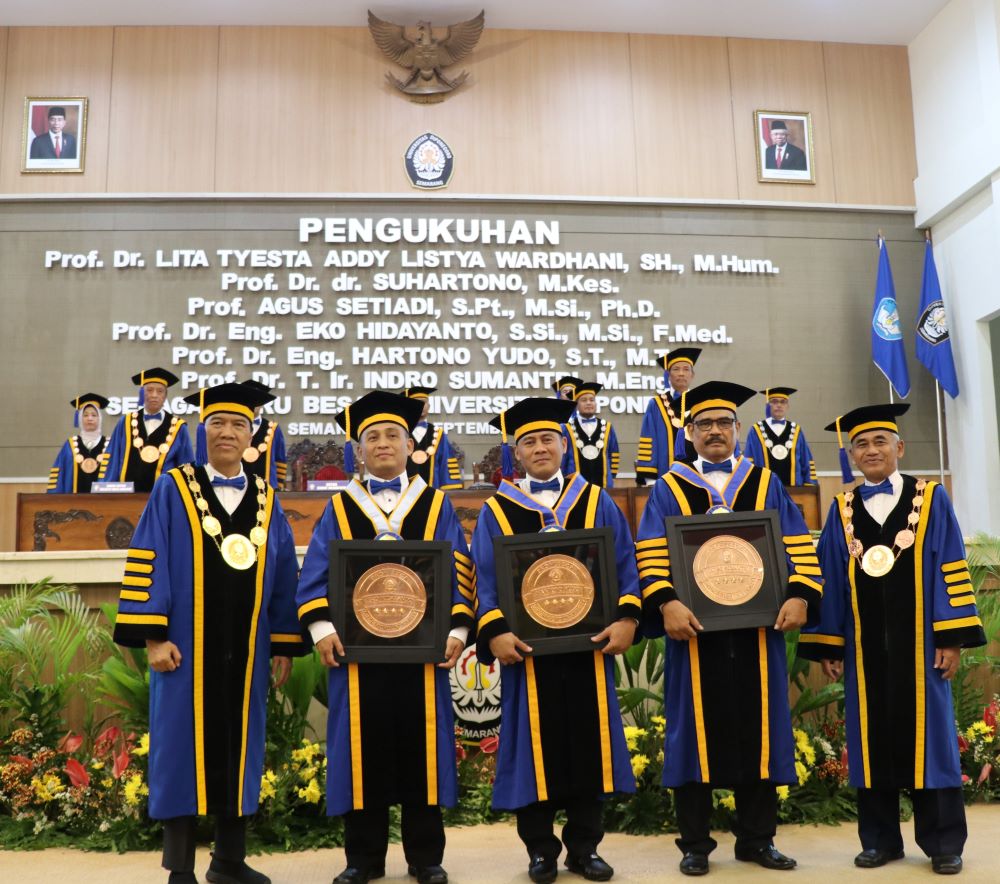Diponegoro University inaugurated three professors on the second day of the afternoon session, Wednesday (6/9), at the Prof. Soedarto, S.H. Building, Undip Tembalang Campus. The inaugurated professors were Prof. Dr. Eng. Eko Hidayanto, S.Si., M.Si., F.Med. (Faculty of Science and Mathematics); Prof. Dr. Eng. Hartono Yudo, S.T., M.T. (Faculty of Engineering); and Prof. Dr. T. Ir. Indro Sumantri, M.Eng. (Faculty of Engineering).
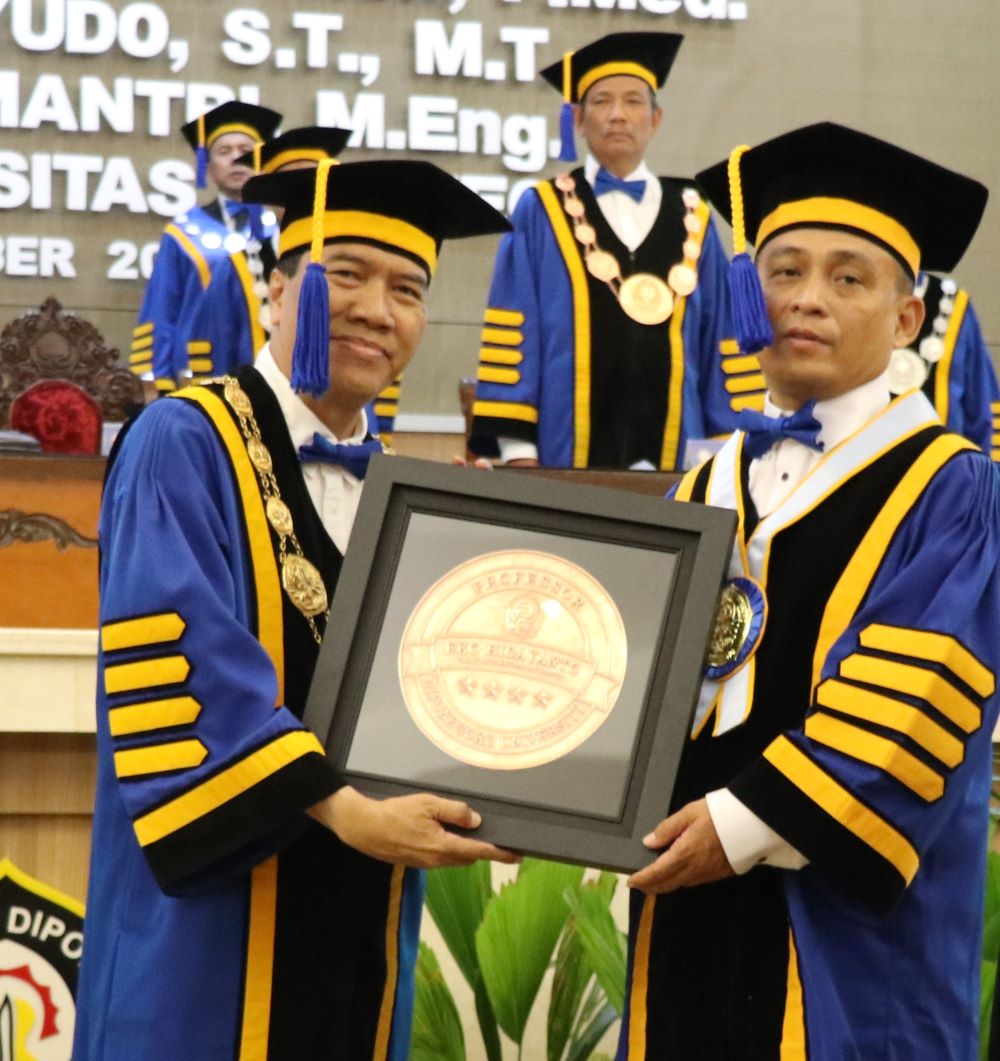 Prof. Eko Hidayanto delivered a speech entitled “The Potential of Natural Rubber and Silicone as Alternative Bolus Materials to Support the Cancer Radiotherapy Process.” Radiotherapy is carried out to stop the growth and, at the same time, kill cancer cells, but it must minimize the effect on healthy organs/tissues around the cancer. One effort to overcome or increase the radiation dose to the skin surface is to use a bolus.
Prof. Eko Hidayanto delivered a speech entitled “The Potential of Natural Rubber and Silicone as Alternative Bolus Materials to Support the Cancer Radiotherapy Process.” Radiotherapy is carried out to stop the growth and, at the same time, kill cancer cells, but it must minimize the effect on healthy organs/tissues around the cancer. One effort to overcome or increase the radiation dose to the skin surface is to use a bolus.
“The bolus has material properties similar to body tissue and is placed on the skin’s surface. Several bolus-making materials developed and used for radiotherapy for patients include paraffin, granules, elasto-gel pad, superflab, thermoplastic sheets, dental wax, polypropylene, and rayon cloth. However, these materials are still quite difficult to obtain because they have to be imported from other countries, which can result in delayed radiotherapy treatment for patients. “As an alternative material for making boluses, cheap and widely available materials can be used, namely natural rubber and silicon rubber,” he said.
Meanwhile, in his material entitled “Structural Engineering to Strengthen Fiberglass Ships Using Hollow Hybrid Materials,” Prof. Hartono explained that fiberglass ships use hollow-shaped construction on their keels made from glass fiber laminate. Structural engineering is carried out to obtain technical and economic advantages. The structure must be strong to ensure safety in operation. The strength of a conventional fiberglass boat depends on the thickness of the glass fiber laminate layer and resin. With the BKI standard, the thickness is around 13 mm, making the boat heavy and requiring expensive production costs. Fiberglass material is brittle.
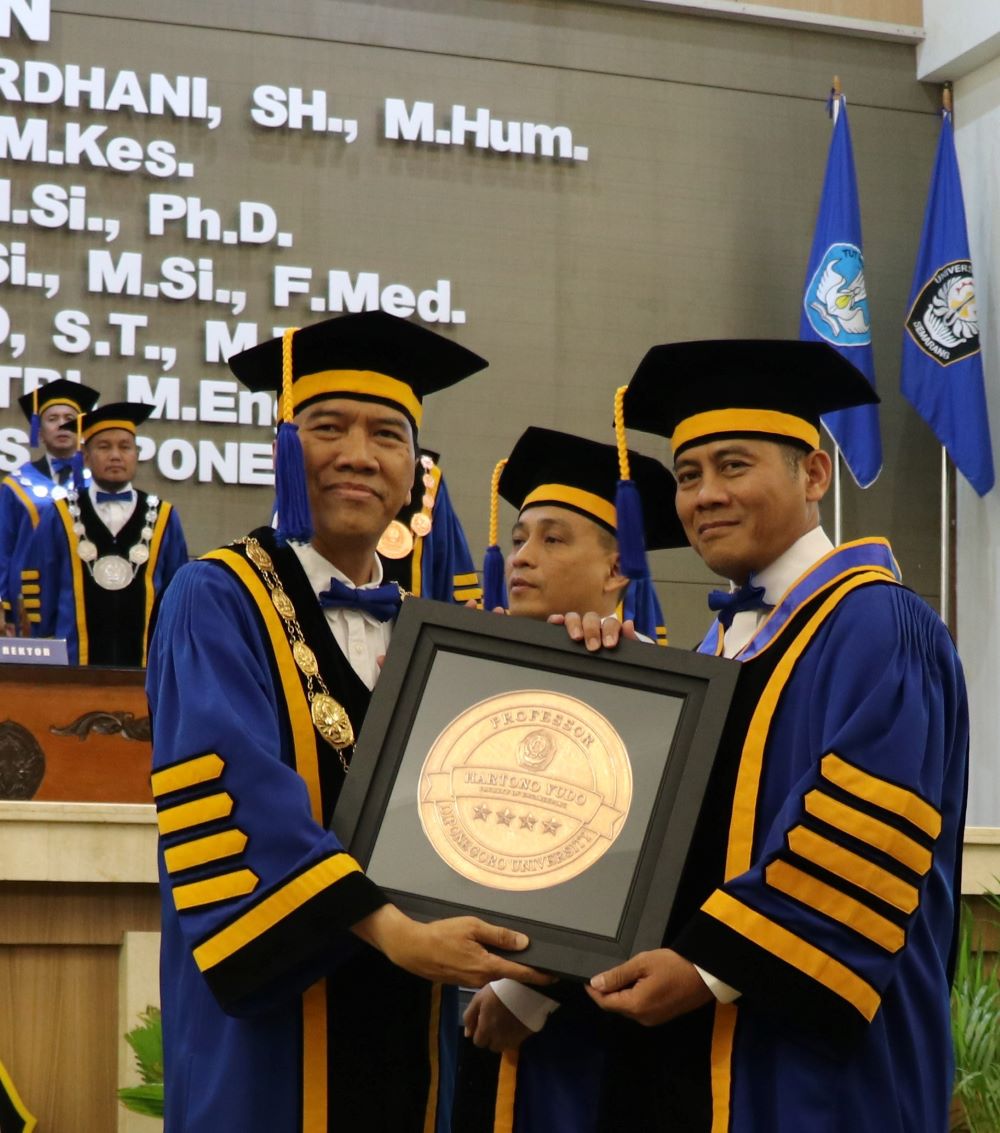 “Structural engineering using hollow iron pipes as a hybrid material to strengthen the longitudinal strength of fiberglass boats has proven to have advantages. The development of structural engineering knowledge on fiberglass ships with hollow hybrid materials is one of the supports for the government, which is the world’s maritime axis country, by carrying out structural engineering to obtain technical economic advantages and ensure safety in operations,” said Prof Hartono.
“Structural engineering using hollow iron pipes as a hybrid material to strengthen the longitudinal strength of fiberglass boats has proven to have advantages. The development of structural engineering knowledge on fiberglass ships with hollow hybrid materials is one of the supports for the government, which is the world’s maritime axis country, by carrying out structural engineering to obtain technical economic advantages and ensure safety in operations,” said Prof Hartono.
Meanwhile, Prof. Indro Sumantri, who presented his scientific work on “Wastewater Treatment Technology for the Development of Environmentally Friendly Renewable Energy,” discussed that developing natural resources plays a vital role in life and that generations should feel the use of natural resources. What is often found is that natural resources are in excess so that the ecosystem or environment around the development experiences damage, either light damage that can be repaired or heavy damage so that the environment is challenging to remediate, which can be dangerous.
“The tendency of a development model that only prioritizes economic aspects, excessive use of natural resources and energy will result in a decline in biodiversity, global decline, inefficient production processes, declining natural resources, and climate change,” he concluded. (LW/Diyah – Public Relations)
